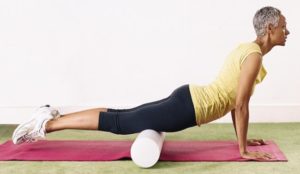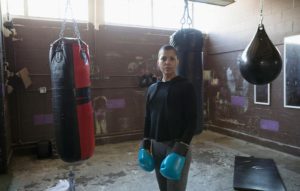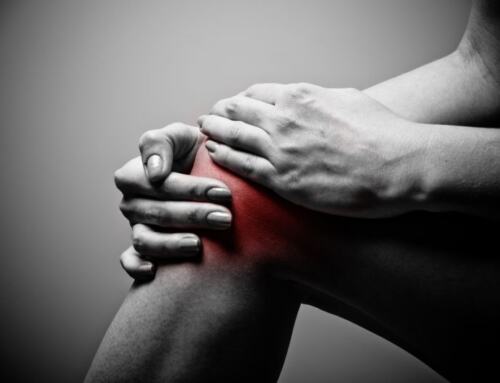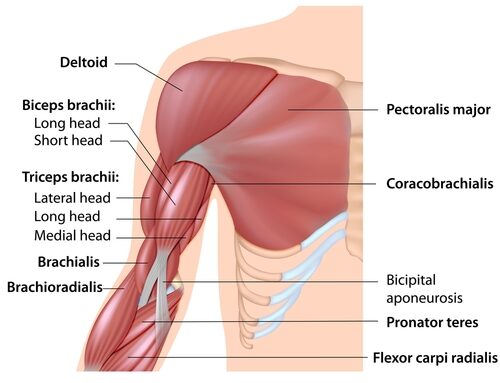7 Post-Workout Recovery Tips Jillian Michaels Swears By
You pushed your limits at the gym yesterday, and today you’re really feeling the burn. Delayed onset muscle soreness (DOMS) is the pain and stiffness that starts a few hours after strenuous exercise and can last for two or three days. When just walking up the stairs feels like pure torture, it can be hard to stick to your usual workout schedule.
So how can you keep achy muscles from slowing you down post-workout? We asked Jillian Michaels—celeb trainer, health and wellness expert, and creator of the Jillian Michaels app—to share her best tips for recovering after a tough workout.
Get acquainted with foam rolling.
There are still plenty of good reasons to stretch every day, but when it comes to staving off soreness, your best bet is to massage your tired muscles with a foam roller. “Static stretching is fine as a cool-down, but studies show that myofascial release—or foam rolling—is the most effective thing you can do for muscle soreness,” Michaels says. Not sure how to use a foam roller? Do a YouTube search for “foam rolling quads”—or whichever muscle group you just worked—and you’ll find loads of helpful tutorials. You’ll also find some helpful tips here. [Read about correcting upper back pain here]
massage your tired muscles with a foam roller. “Static stretching is fine as a cool-down, but studies show that myofascial release—or foam rolling—is the most effective thing you can do for muscle soreness,” Michaels says. Not sure how to use a foam roller? Do a YouTube search for “foam rolling quads”—or whichever muscle group you just worked—and you’ll find loads of helpful tutorials. You’ll also find some helpful tips here. [Read about correcting upper back pain here]
Hydrate.
Forget the chocolate milk or sugary sports drinks; plain old water will do the trick. “Honestly, just hydrate,” Michaels says. “If you want to get fancy with it, take a branched-chain amino acid supplement, which helps the muscles rebuild and recover.” You can also mix in coconut water to replenish your electrolytes, or add 2 grams of ginger root, which may slow the progression of muscle soreness. (Ginger chews work, too!)
Skip the pain relievers.
Assuming you didn’t pull a muscle or twist an ankle, a little bit of post-workout soreness is actually a good sign. Exercise causes micro-tears in your muscles, and the healing process is what helps you build stronger muscles. Non-steroidal anti-inflammatory drugs (NSAIDs) may take the edge off your soreness, but Michaels notes that they do so by inhibiting parts of the healing process, so avoid them unless you’re in agony.
Eat a balanced diet.
 Protein gets all the love, but all three macronutrients—protein, fat, and carbs—play a vital role in muscle recovery, so be wary of strict diets that drastically cut any of the three. “They all have very specific and different functions that are necessary not just for recovery, but for optimal health overall,” says Michaels. For example, omega-3 fatty acids—the healthy fats found in walnuts, avocados, and salmon—have been proven to reduce soreness after exercise. “A clean diet is going to be the most powerful thing for reducing inflammation,” Michaels says.
Protein gets all the love, but all three macronutrients—protein, fat, and carbs—play a vital role in muscle recovery, so be wary of strict diets that drastically cut any of the three. “They all have very specific and different functions that are necessary not just for recovery, but for optimal health overall,” says Michaels. For example, omega-3 fatty acids—the healthy fats found in walnuts, avocados, and salmon—have been proven to reduce soreness after exercise. “A clean diet is going to be the most powerful thing for reducing inflammation,” Michaels says.
Build R&R; into your routine.
“Think of exercise as the architect and recovery as the builder,” Michaels says. Here’s her ideal schedule for giving each muscle group adequate time to recover:
MONDAY: Work your “push” muscles, which include your chest, quads, triceps, and shoulders.
TUESDAY: Work your “pull” muscles: your back, biceps, and hamstrings.
WEDNESDAY: Do light cardio, or take the day off.
THURSDAY: Work push muscles.
FRIDAY: Work pull muscles.
SATURDAY/SUNDAY: Do light cardio one day and rest the other.
Following this game plan gives each muscle group two days to recover before you train it again. “That, to me, is an ideal way of hitting the gym five times a week, training your muscles without over-training them, and prioritizing your recovery,” Michaels says.
Don’t underestimate sleep.
Your sleep habits can affect just about every aspect of your health, and muscle recovery is no exception. “It’s extremely important to prioritize sleep,” Michaels says. In fact, she adds, if skipping your workout one morning means you’ll be able to get a full eight hours, go ahead and choose the extra zzz’s. (Sleeping through your workouts shouldn’t become a habit, though. If you’re having trouble hitting your sleep goals on a regular basis, try these 21 strategies for sleeping better.)
Keep moving if you can.
Even if you’re tempted to collapse on the couch after a workout, try to stay active. “If you can move around and keep the blood flowing through your muscles, it’s going to be better for a speedier recovery,” Michaels says. But if the only time you can squeeze in a workout is right before your morning commute or right before bedtime, you may not really have a choice—and that’s okay too. Even if you’re not recovering as fast as possible, you still got in a workout, and that’s what counts.
“What’s realistic is not always ideal, and what’s ideal is not always realistic,” Michaels says. “Incorporate what you can, and don’t feel bad about what you can’t.”
[…]








